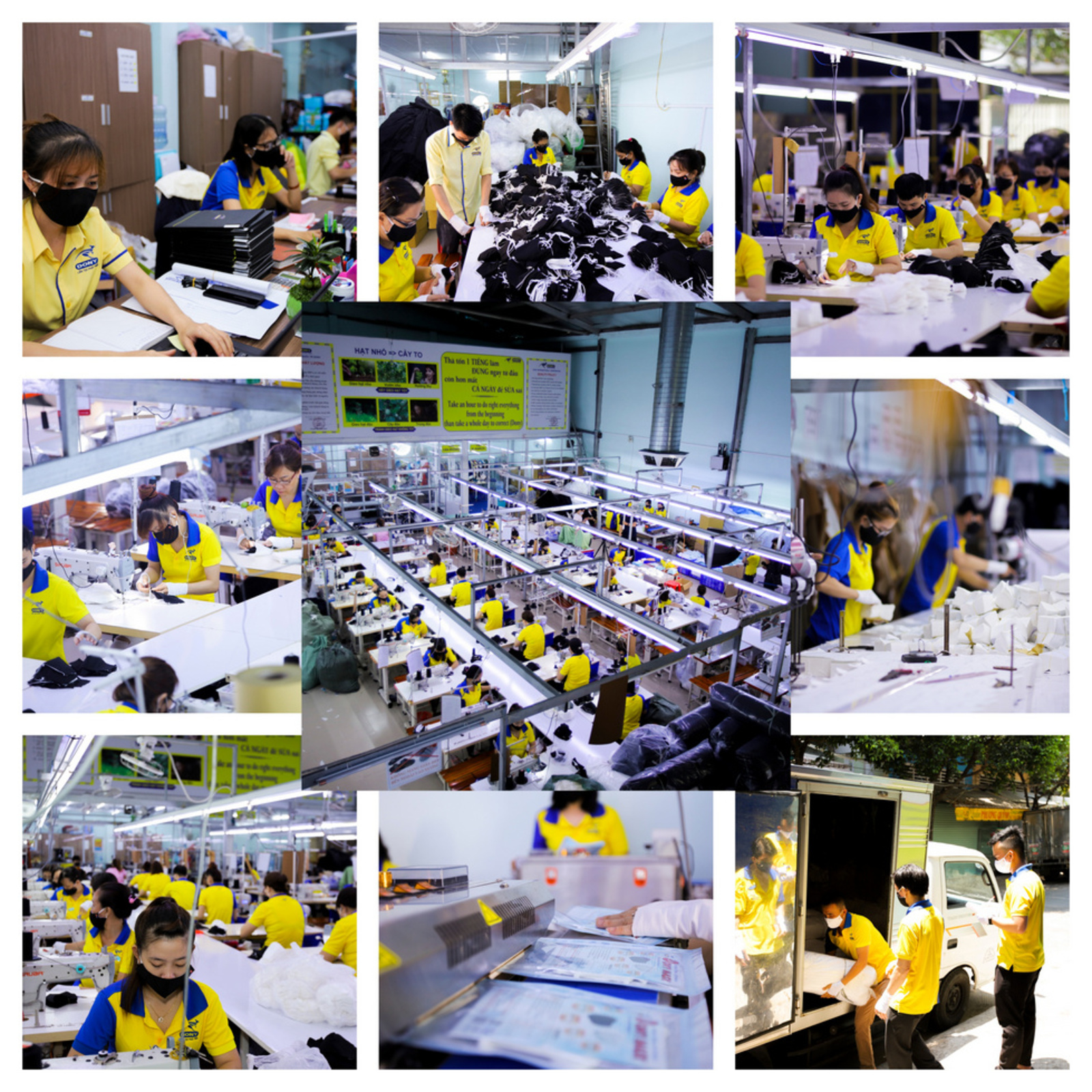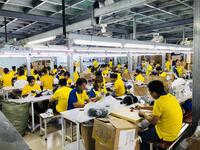Vietnam is quickly being recognized as one of the fastest clothing and apparel manufacturers in the world. Despite being a developing nation, Vietnam is capable of producing high-quality goods with low production costs.
The country has dedicated over 2.3 million people towards the clothing and textile industry. This industry adheres to the dynamic market demands and rates while operating efficiently.
Existing factories in China are becoming overcrowded. This allowed their manufacturing expertise to spill over borders into Vietnam. Multilateral free trade agreements such as TPP and EVFTA have also encouraged industry growth.
The EVFTA Agreement will ensure that Vietnam gets a competitive advantage over China. This enables them to enjoy 0% tax benefits that other countries such as Bangladesh and Cambodia also get.
So, what does this industry have to offer?
Why the Clothing and Apparel Industry is Fast-Growing
Vietnam’s clothing and apparel industry is imbued with history and tradition. Women have known sericulture for centuries. And they have been creating beautiful, sophisticated silk materials of high value for just as long.
The textile industry didn’t develop until the mid-1900s. Today, it’s one of the most important sectors contributing to the country’s socio-development structure. This sector is also the biggest export earner.
The only catch is that the country has to outsource its raw materials. Garments factories have to import a large percentage of cotton used in manufacturing. Cotton is used to produce multiple items like pants, shirts, dresses, and even towels.
Vietnam is in a beneficial position geographically. The country has two international airports and several major ports. This allows the transporting network to be efficient. All supplies reach the factories swiftly.
The biggest advantage Vietnam has over others is the skill of labor. The industry has a supply of skilled workers. The assembly work is extremely competitive, so the resulting product is always of the best quality.
Each manufacturing company employs up to 2500 workers, who produce millions of garments annually. The smallest factories hire around 500 and still have the capacity to produce 300,000 items each year.
Impact of COVID-19 on Vietnam’s Clothing and Apparel Industry
The COVID-19 pandemic has brought several challenges to the industry. Vietnam’s clothing and apparel industry relied on a few key partners. The pandemic had disrupted the supply chain, which resulted in a shortage of raw materials.
There was also a drop in demand from the American and European markets. Bulk orders were being canceled, which led to job cuts, lowered revenues, and declined profits.
The pandemic has made Vietnam’s clothing and apparel industry an ideal alternative to China. Because of this, Vietnam may soon attain the second position in the apparel manufacturing and exporting industry.
The government was quick to respond in this regard. The industry continues to evolve despite the tough circumstances. It continues to showcase optimistic prospects for all parties involved post-pandemic.
Vietnam’s Clothing and Apparel Industry’s Post-Pandemic Recovery
The country has shifted its focus on producing personal protective equipment (PPE). Producers have realized that this will help cope with suspended or declined orders.
The surging demand from domestic and foreign markets made this decision easier. The workers are also working with renewed vigor. They are equipped with expert skills that have led to increased productivity and safer products.
The country has exported over 400 million facemasks since the industry gained momentum after the pandemic began. The industry now produces around 100 million facemasks each day.
Vietnam will later focus on building the industry’s value chain, diversify its trading partners, and decrease the reliance on other countries for raw materials. This has several investors looking into reputable garments companies in Vietnam.
Let’s take a look at the top performers in this industry.
The Top Clothing and Apparel Manufacturers in Vietnam
3. MUK Ltd. Clothing Manufacturer
MUK Ltd. Clothing Manufacturer has made a name for itself because of its ethically produced items. It caters to the women’s fashion industry and has been in the manufacturing business for 6 years.
The factory has the capacity of producing 200,000 garments every month. They produce a diverse range of clothing, which are trendy, fashionable, and chic. The services include sourcing fabric, trimming, and producing accessories too.
The company is unique because they do their own designs. The fabrics and trims are inspired by the latest trends. This has attracted clients from England, the USA, Canada, and Australia.
2. Thai Son S.P. Sewing Factory
The Thai Son S.P. Sewing Factory is located in Ho Chi Minh City, Vietnam, and is known for its wide range of garments. It’s famous for using circular knitted fabrics, which are both visually appealing and comfortable.
The company stands out because of its value-added services. The company isn’t limited to manufacturing only. They also dabble in design, pattern making, dyeing, and other services.
The company operates over 1200 machines and employs around 1000 workers. This family-owned business produces a multitude of products that cater to men, women, and children alike.
Thai Son S.P. Sewing Factory produces for clients all over the world, including the United States, Canada, Russia, Australia, and parts of Europe.
1. Dony Garment Company
Dony Garment Company stands out from the others based on how they operated during the COVID-19 pandemic. The company joined the fight against the pandemic by producing protective gear that has been in continuous demand.
The Dony Masks are anti-droplet and 99.9% anti-bacterial. They have also been sterilized by ethylene oxide and are chemical-free and reusable. The company has received certification on safety and quality from multiple countries and sources.

The products from the company have been sought all over the world. This has been its main line of production during the pandemic. The company focuses on producing simple fashion clothes (T-Shirt, Shirt, Polo-Shirt, Dress, Hat, Jacket, Pants), uniforms (chef, driver, school, company, police & military, security guard, sports. heat resistant, industrial, hospital), workwear and PPE (antibacterial face mask, medical protective clothing) in the local and international markets, otherwise.
This brand exports worldwide, including America, Europe, Australia, and Asia (focused in 14 main regions are the USA, France, KSA, Japan, UK, Australia, Belgium, Singapore, Germany, Canada, Hong Kong, Malaysia, Jodan, South Africa). Its products are high in demand because of the superior quality of goods (standards FDA, C.E, DGA, TGA, SASO, ISO, TUV Reach, CFS, Intertek). The biggest plus is the low MOQ (200pcs per design with different colors and mixed sizes).
Benefits of Vietnamese Clothing Manufacturing
1. Cost-effective
The country produces high-quality products at a low price. It’s one of the cheapest sources of clothing, textiles, and apparel.
2. Trade Advantages
Vietnam is a part of ASEAN. As a result, the country has free trade agreements with Japan, South Korea, India, and Australia, along with all of Southeast Asia.
3. Dynamic production:
The Vietnamese manufacturing market isn’t only one of the largest but also one of the fastest. It caters to the market demands swiftly.
Drawbacks of Vietnamese Clothing Manufacturing
4. Unwilling to take small orders
Vietnamese manufacturers are reluctant to scale-up and take in smaller orders. Many believe that the effort put into it isn’t worth the hassle.
5. Dependent
The industry heavily relies on China for some clothing components. These include buttons or zippers. Sourcing this adds to the production time and can often cause delays.
Final Thoughts
As you can see, the benefits of sourcing from Vietnam outweigh the disadvantages. The industry operates in tandem with its suppliers and producers, creating a complex ecosystem of efficiency
The country specializes in all sorts of apparel. Their services aren’t limited in manufacturing either. The factories source and design fabric, develop, and produce garments, and ship their products safely. Don’t worry about communication either. The number of English speakers in the country will surprise you.
Now that you know how the industry works, get your business idea running!






